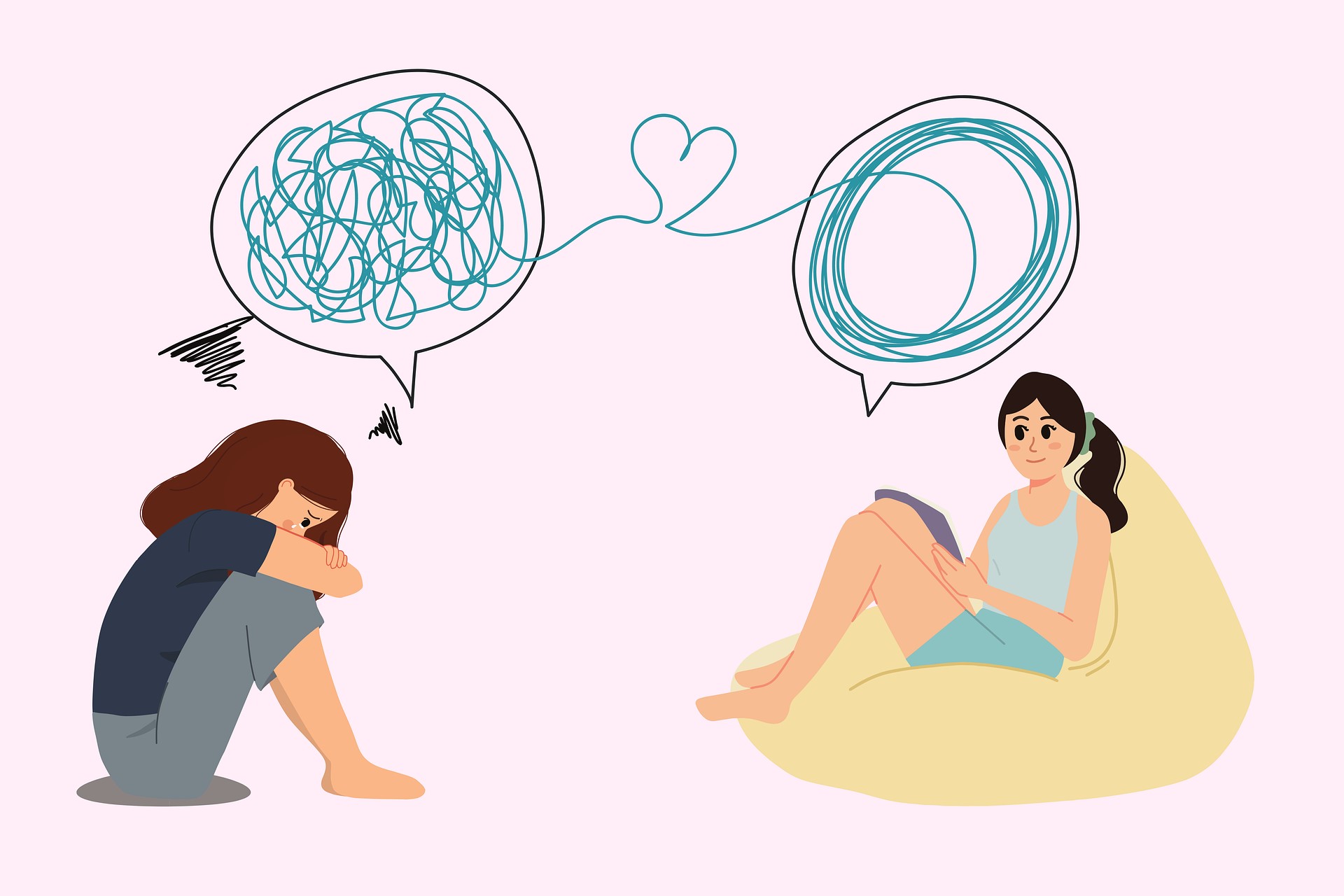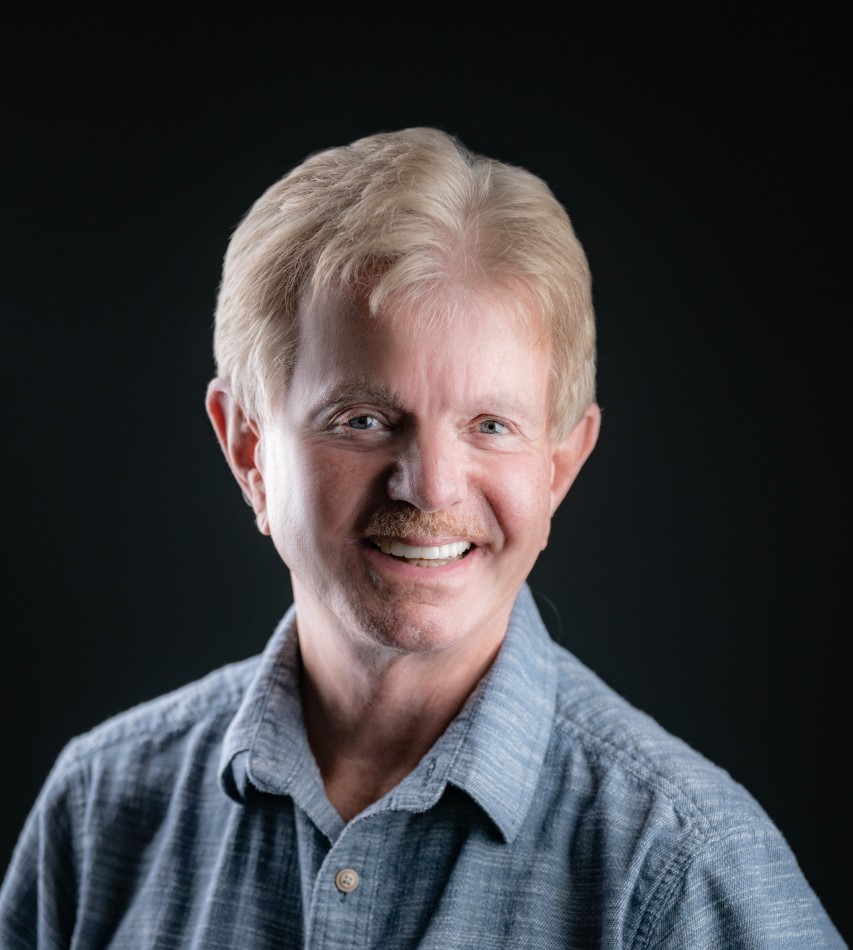
Inside out
Discovering wellbeing in schools
Thomas Kelley and Kathy Marshall propose that if we are to address the issue of poor wellbeing and mental stress in our schools, we must grasp a sufficient understanding of the way every person’s psychological life is created from the “inside-out”.
The P factor: a single cause of poor mental health?
Mental health research points to a common liability behind every symptom and form of mental ill-health. Researchers have labeled this common liability the “psychopathology factor” or “p factor”. The p factor has been associated with the ability to plan, focus attention, remember instructions, and juggle multiple tasks. People with ‘high p’ have greater life impairment, worse developmental histories, and unhealthy brain functioning during childhood.
This might seem counter-intuitive, but several prominent researchers agree. For example, psychologist Matti Cervin and associates reported that even before children begin formal education, several symptoms of mental ill-health (e.g., difficulty concentrating, chronic stress, angry outbursts) arise from a single, general factor.
Understanding what this ‘p factor’ is could be life-changing for both educators and students.
If this speculation is correct, it would have huge implications for how teachers and schools address the seemingly growing issue of poor wellbeing and mental ill-health. Understanding what this ‘p factor’ is, could be life-changing for both educators and students.
What is the ‘p factor’?
 While there is considerable agreement that a “p factor” exists, there is less agreement about what it is. According to one school of thought, mental health educators, Kelley, Pettit, Sedgeman, and Pransky came to the same conclusion—that researchers have been looking for ‘p’ from the wrong perspective— from the “outside-in”. These educators argue that researchers have focused mainly on the symptoms associated with ‘p’ (e.g., negative emotions, low cognitive functioning) and have overlooked the root common cause of these symptoms—an insufficient understanding of the way everyone’s psychological experiences are created from the “inside-out”.
While there is considerable agreement that a “p factor” exists, there is less agreement about what it is. According to one school of thought, mental health educators, Kelley, Pettit, Sedgeman, and Pransky came to the same conclusion—that researchers have been looking for ‘p’ from the wrong perspective— from the “outside-in”. These educators argue that researchers have focused mainly on the symptoms associated with ‘p’ (e.g., negative emotions, low cognitive functioning) and have overlooked the root common cause of these symptoms—an insufficient understanding of the way everyone’s psychological experiences are created from the “inside-out”.
Rather than zeroing in on the external appearance of mental ill-health, Kelley and associates view factor p as a “general mental health factor” which they define as a sufficient under-standing of the “inside-out” creation of every person’s psychological life.
Something important follows. If everyone’s psychological life is internally created then everyone must also have an inner capacity for well-being, wisdom, and resilience. Kelley and associates assert that this is the case—that every person has a natural capacity for wellbeing which includes the ability to “self-right” from discomforting states of mind and adverse life events. Understanding this innate wellbeing and the way it is accessed is particularly important for educators.

.
Innate mental health

Every person is born mentally healthy. Young children typically live in this health without any training, techniques, or coping strategies. Young children are typically exhilarated and unselfconscious, show love and affection unconditionally, and rebound quickly from negative moods. This innate wellbeing also includes an inner capacity for resilience, described as follows by renowned resilience researcher, Ann Masten (2001):
“The great surprise of resilience research is the ordinariness of the phenomena. … Resilience does not come from rare and special qualities, but from ordinary everyday magic of ordinary normative human resources in the minds, brains, and bodies of children, in their families and relationships, and in their communities.”
Why individuals drift away from good mental health
Whether they realize it or not, every educator and student is continually thinking—constantly using the power of Thought to create their psychological experiences (e.g., feelings, perceptions, moods, symptoms) from the “inside-out”. However, this fact is often overlooked. Most people tend to think that their psychological experiences are created from the “outside-in”. For example, it is often assumed that stress or upset is externally triggered perhaps because of a negative interaction with others or by an adverse life-experience. However, from one day to the next, the same individual may respond quite differently to the very same circumstance because their thoughts have changed. When one stops attending to discomforting thoughts, and allows their personal mind to clear or quiet down, space is created for new, fresh thoughts and wellbeing to surface.
Misusing the power of thought
When it comes down to it, Kelley and associates propose there are only two ways that people can experience life. Either they are operating from well-being, or they are obscuring or covering over this health by innocently misusing the power of Thought. There are myriad ways that people misuse this creative power. Some of us worry or ruminate. Others judge and “fault find.” Some chronically re-think perfectionistic thoughts. Others create a self-image or “who they think they are”. Many others have a busy, overly active, analytical mind. These, and myriad other misuses of the power of Thought obscure or cover over one’s natural well-being like clouds covering over the sun. When people recognize when they are misusing the power of Thought and allow their personal mind to quiet or clear, the default setting of wellbeing will engage.
The healthy role of discomforting feelings
Sydney Banks (1998) asserted, “Mental health lies within all human beings, but it is shrouded and held prisoner by our own erroneous thoughts”. Most individuals don’t realize they have a built-in barometer – their discomforting feelings – that will alert them when they are misusing the power of Thought, in much the same way as physical pain tells them they may be physically ill and need a remedy. Using the signal of a discomforting feeling, people can get “back on track” by doing their best to allow their stressful thoughts to pass through which creates space for fresh, wiser thoughts, and wellbeing to surface.
Mental health education

The good news is that educators and students can learn to use the creative power of Thought in their best interest and tap into their natural resource of well-being, wisdom, and resilience. Living in this health means that teaching and learning can be more spontaneous and creative; that educators and students can be more receptive to change, less compelled to defend their ingrained biased beliefs, take their low moods less seriously, communicate more effectively, resolve conflicts more peacefully, and recover more rapidly from negative states of mind. Judy Sedgeman asserted:
“Once people understand the thought-experience connection and realize how to re-access a healthy state of mind, they can sustain calmness, wisdom, and well-being, regardless of circumstances”.
Conclusion
In “The Courage to Teach” Parker Palmer reminds us;
“The most practical thing we can achieve in any kind of work we do, is insight into what is happening inside of us as we do it”.
We think that this insight is within everyone’s grasp. We all create our psychological lives from the “inside-out”. We all can learn how to use the power of Thought in our best interest. We all have the innate capacity for wellbeing which will surface naturally through a quiet personal mind. When educators and students grasp a sufficient understanding of the way everyone’s psychological life is created from the inside-out, they can unleash the “ordinary magic” that exists undamaged inside them.
Three resources
Mental health education grounded in this “inside-out” view of “mental health factor p” is now being applied in several school communities. We would like to highlight the following resources regarding this education that may be especially relevant for international schools:
My Guide Inside , is a K-12 mental health curriculum for primary, intermediate, and secondary student classes which includes modestly priced learner books and teacher manuals available in digital, print, and on demand formats. Select print translations are offered. An economical global online Moodle version is forthcoming.
iheart Principles (Innate Health Education & Resilience Training), founded in London, UK, offers a program that helps young people uncover their innate resilience and mental well-being (https://www.iheartprinciples). Trainers work closely with schools to build a sustainable culture of resilience and well-being embedded across the whole school environment including students, staff members, and parents/caregivers in a variety of international locations.
The SPARK Initiative in Tampa, Florida, operating in schools, jails, drug rehabilitation centers, and social service organizations has 100 certified trainers in eight countries (https://sparkcurriculum.org/). SPARK was designated a CASEL evidenced based program
 Thomas M. Kelley, Ph.D. is a licensed psychologist and a Professor in the Emeritus Academy at Wayne State University, Detroit, Michigan, USA. Tom has authored over 100 peer-refereed papers and chapters and two books; “How Good Can You Stand It” and “Upside-Down & Backwards: The Innocent Failure of Mainstream Psychology”, available from Amazon.
Thomas M. Kelley, Ph.D. is a licensed psychologist and a Professor in the Emeritus Academy at Wayne State University, Detroit, Michigan, USA. Tom has authored over 100 peer-refereed papers and chapters and two books; “How Good Can You Stand It” and “Upside-Down & Backwards: The Innocent Failure of Mainstream Psychology”, available from Amazon.
Thomas can be reached at aa5216@wayne.edu
 Kathy Marshall is Executive Director at the National Resilience Resource Center and teaches at the University of Minnesota, Earl E. Bakken Center for Spirituality and Healing Minneapolis, Minnesota, USA. Kathy has co-authored the “My Guide Inside” K-12 curriculum. Her most recent publications include “Parenting with Heart” available from Amazon and “Discovering Resilience and Wellbeing in School Communities” at Springer
Kathy Marshall is Executive Director at the National Resilience Resource Center and teaches at the University of Minnesota, Earl E. Bakken Center for Spirituality and Healing Minneapolis, Minnesota, USA. Kathy has co-authored the “My Guide Inside” K-12 curriculum. Her most recent publications include “Parenting with Heart” available from Amazon and “Discovering Resilience and Wellbeing in School Communities” at Springer
Kathy can be reached at nrrc01@gmail.com
FEATURE IMAGE: by Ryan Pernofski on Unsplash
Support images: by OpenClipart-Vectors, Rosy – The world is worth thousands of pictures, Mohamed Hassan & Moondance from Pixabay
References
Banks, S. (1998). The missing link. Vancouver, BC: Lone Pine.
Cervin, M., Norris, L. A., Ginsberg, G., Gosch, E. A., et al., (2021). The p factor consistently predicts long-term psychiatric and functional outcomes in anxiety-disordered youth. Journal of the American Academy of Child & Adolescent Psychiatry, 60(2), 902-912.
Green, A. L., Ferrante, S., Boaz, T. L., & Wheeldon-Reece, B. (2021a). Social and emotional learning during early adolescence: Effectiveness of a classroom based SEL program for middle school students. Psychology in the Schools, 58(6), 1056-1069.
Green, A. L., Ferrante, S., Boaz, T. L. et al. (2021b). Evaluation of the SPARK child mentoring program: A social and emotional learning curriculum for elementary school students. Journal of Primary Prevention, 42(5), 531-547.
Kelley, T. M., Pettit, W. F., Sedgeman, J. A., & Pransky, J. B. (2021). One generic mental Illness: A new explanation of general factor p and its application to clinical practice. Spiritual Psychology and Counseling, 6(2), 7-26.
Kelley, T. M., Wheeldon-Reece, B., & Lambert, E. (2021). The efficacy of mental health education for improving the mental health and school climate perceptions for students at-risk for school failure. Spiritual Psychology and Counseling, 6(2), 73-93.
Marshall K. (2021) Discovering resilience and well-being in school communities. In Nabors L. (eds) Resilient Children. Springer Series on Child and Family Studies. Springer, Cham.
Masten, A. (2001). Ordinary magic: Resilience processes in development. American Psychologist,56(3), 1-12.
Palmer, P. J. (2007). The courage to teach: Exploring the inner landscape of a teacher’s life. Hoboken, NJ: Jossey-Bass.
Sedgeman, J. A. (2005). Health Realization/Innate Health: Can a quiet mind and a positive feeling state be accessible over the lifespan without stress-relief techniques? Medical Science Monitor, 11(12), 47-52.



